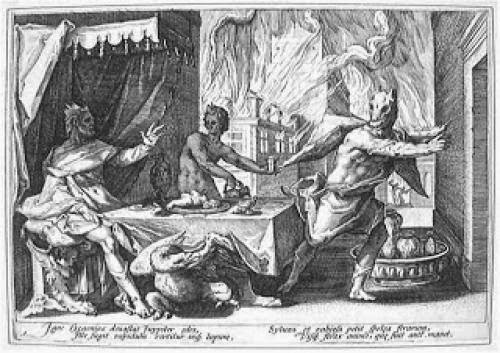skip to main |
skip to sidebar
Sorry I've been flying under the radar for so long. While I toil away on the next review, here's some quality reading to keep you occupied. First, from the late, great Martin Gardener comes this study of lycanthropy.This choice bit describes the origins of the term lycanthrope:"The Greeks worshipped the wolfgod, Zeus Lycaeus and there are many stories of ordinary men being transformed into wolves and other creatures. In Graves' translation of Greek myths an account is given of the inhabitants of Parnassus who followed a pack of howling wolves to a mountain top where they established a new city, Lycorea. According to the myth, the Parnassians practiced Lyacaon's Abomination, a ritual where a boy was sacrificed and his guts made into a soup which was eaten by shepherds, one of whom would then turn into a tormented werewolf who was condemned to wander the countryside for 8 years, regaining his humanity if he refrained from eating human flesh. According to this legend a full recovery was possible as illustrated in the legend of Damarchus who went on to win a boxing prize at the Olympic Games after rigorous training in the gymnasium. The connection with cannibalistic practices is further illustrated in the legend of Lycaon, King of Arcadia, who was changed into a wolf as punishment for secretly feeding Zeus human flesh."The article traces the cultural history of lycanthropy (as late as the 1700s, epidemics of lycanthropy would break out and, in one case, a French judge is reported to have condemned more than 600 sufferers to death) and ends on a curious note that suggests our own affection for werewolf fictions may have replaced religious inspirations for the disease. In short, movie werewolves might be creating modern lycanthropes:"To gain an understanding of certain bizarre psychiatric symptoms it may be helpful to consider the effects of religion and culture. At the time of the Inquisition, when the werewolf was a feared satanic representation, the incidence of lycanthropy peaked. As religious beliefs have changed, the perception of the devil as a wolf or goat-like creature has receded but is not entirely unfamiliar. These beliefs may be revived in those suffering from severe depressive illness where they are incorporated into delusions of guilt and sinfulness. Similarly, the cannibalistic and aggressive qualities of the lycanthrope can be traced back to the content of ancient myth and followed through the centuries when the werewolf retained these characteristics. Despite the passage of time, the werewolf remains a powerful and evocative image. The influence of myth and legend has been filtered and obscured with the passage of time but it is likely that the symptom of lycanthropy will continue to be seen as long as tales of the wolf-man can frighten us."



